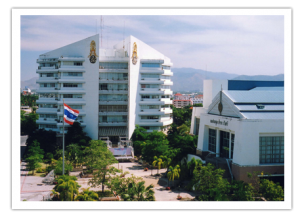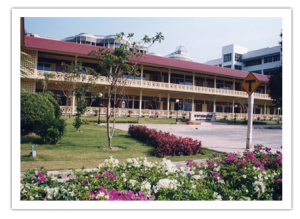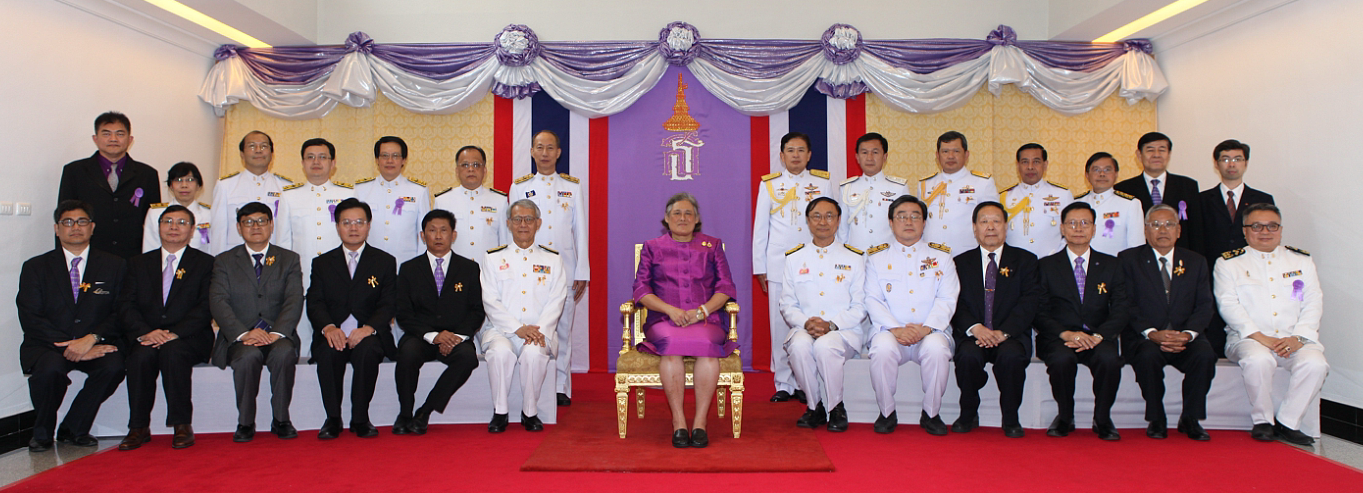ABOUT SCGI
SCGI Master Program

BACKGROUND
This program is collaboration among Wuhan University: China, Burapha University: Thailand, and GISTDA (under Ministry of Science and Technology: Thailand).
WHU, BUU and GISTDA agree to cooperate on offering of a Double Master Degree on GeoInformatics and Space Technology under the supervision of the Sirindhorn Center for GeoInformatics-SCGI.
Memorandum of Understanding was initiated among the three entities namely; (WHU), (BUU), and Geo-Informatics and (GISTDA) was signed by 3 parties on April 6, 2017 at Wuhan University, The People’s Republic of China.
This program has been designed to prepared personal capability for the demands of spatial solutions in the domain-area educational superiority of Wuhan University of the Peoples Republic of China and Burapha University and the resource superiority of GISTDA, Ministry of Science and Technology of Thailand.
Geo-informatics technology is rapidly and extensively changing and developing in recent years and has been greatly improved over time; therefore, in order to effectively and sustainably utilize this technology, human capacity building is a crucial component needed to be enhanced continuously. Geo-informatics professionals should engage in continuing education to stay up to date on the newest trends and techniques of this technology.
COLLABORATION
Wuhan University is the world class comprehensive research university and key national university of China, particular in Geoinfomatics technology.
In 2011, Wuhan University is among the 10 Chinese universities listed by The Times as top 400 universities in the world.
The State Key Laboratory of Information Engineering in Surveying, Mapping and Remote Sensing, Wuhan University (or LIESMARS), was founded in 1989, and the first state key laboratory in the field of surveying and mapping in China.
Over the recent five years, researchers of LIESMARS have won 14 national scientific awards and 81 ministerial and provincial scientific awards.
Burapha University has Faculty of Geo-infomatics where is the first and biggest faculty on geo-informatics technology of Thailand.
Burapha University has become one of Regional center for space and geo-informatics of GISTDA as its location among East–West Economic corridor of Thailand, Burapha university makes an autonomous higher education institutions that can meet the needs of government agencies and the private sector in the East region and have sufficient capacity to expand its outreach to the country. As the university vision that
“Wisdom of the East for the Future of the Nation”
Geo-Informatics and Space Technology Development Agency or GISTDA is a pioneer in developing geo-informatics and space technology for national and social problem solving under supervision of the Minister of Science and Technology of Thailand.
With experienced on using space and geo-informatics for national and social problem solving for 17 years, such as disaster, agricultural, natural resources and social disparity, now GISTDA has been trusted from the government as the committee in many national policies.
Therefore, this collaboration among Wuhan University, Burapha University and GISTDA for SCGI Master Program under the Supervision of the Sirindhorn Center for Geo-Informatics (SCGI) will be a source of quality scientist incubation in development of space and geo-informatics technology for SCGI Master Program.
OBJECTIVE
This program has been designed to prepared personal capability for the demands of spatial solutions in the domain-area educational superiority of Wuhan University of the Peoples Republic of China and Burapha University and the resource superiority of GISTDA, Ministry of Science and Technology of Thailand.
This program will provide students with advanced knowledge and technical skills of various domains of geoinformatics technologies with their scientific and practical aspects that are useful for their future professional lives as well as in terms of preparing them for possible doctoral studies and lifelong learning.
“To increase and improve personal capacity in Space Technology and Geo-informatics for regional competitiveness and prosperity.”
COURSE PATTERN OF SCGI MASTER’S PROGRAM
SCGI Master Program will be an international program with students receiving double master degrees on GeoInformatics and Space Technology from both WHU and BUU.
SCGI Master Program Curriculum
Program Degree: SCGI is Master Degree Program with Full-time Postgraduate.
Degree Awarding:
– Double Degree Program and students will receive degrees from both Wuhan University and Burapha University.
Period of study: 2 Years
– First year study in Thailand (Burapha University and GISTDA)
– Second year study in Wuhan University, China
Research: Focus on Geo-informatics technology in advanced innovation according to Wuhan University’s research standard.
Qualified Applicants
Applicants should be under 40 years old and have a bachelor’s degree in Science or Engineering, e.g., Aerospace, Electronical Engineering, Communication, Environmental Engineering, Mathematics, Physics, Geography, Survey and Mapping, Geo-Informatics, Geodesy, and etc., with a GPA not lower than 3.0. Non-native English applicants are required to submit the HSK certificate, i.e., TOFEL (80) or IELTS (5.5) and above.
BENEFIT
Based on the content of this program, human capacity building and technology transfer can tremendously expand in the region and worldwide. The aim is not only to increase the capability of personnel knowledge and research development in the region but also to establish and expand the network of academic knowledge and research collaboration, and to deliver the new methods/data/new innovative products to ASEAN countries that will benefit to natural resource and environmental management of the region.
Most importantly, learning the applications and methods can respond to current regional situation and problems, especially in case of emergency or during disaster within the nation, around ASEAN countries, and worldwide.
Human capacity building will be enhanced to respond to current regional situation and problems and to enable development of new innovations in space and geo-informatics technology for country and regional development and competitiveness and to lead to regional sustainability.

Sirindhorn Center for Geo-Informatics
Sirindhorn Center for Geo-Informatics (SCGI) is established under the cooperation between the Ministry of Science and Technology of Thailand by Geo-Informatics and Space Technology Development Agency (Public Organization) : GISTDA, and Wuhan University by State Key Laboratory of Information Engineering Surveying, Mapping and Remote Sensing : LIESMARS, the People’s Republic of China.
Objective
The SCGI serves as the international institute for research and knowledge/technology transfer in space technology and geo-informatics.
Mission
- To be an international center of technology transfer, research, including an incubator for space technology and geo-informatics
- Enhancing the human capacity building and awareness raising in space technology and geo-informatics through training courses, workshops, special lectures, and seminars
- Promoting and supporting collaborative research projects, exchange of personnel, innovative applications
Benefits
- The country is serving as the international center on research and technology transfer in space technology and geo-informatics.
- SCGI will increase personnel capacity in the area of space technology and geo-informatics and raise awareness for all levels; public sectors, educational institutes, and private sectors.
- The outputs/outcomes from various research projects, development, and innovation can enhance our country development.
- SCGI will serve as a focal point and expand the network of academic knowledge and research collaboration with sharing research experiences and knowledge development.
Steering Committee
- Her royal highness princess maha chakri sirindhorn
- Dr.Weerapong Pairsuwan, Permanent Secretary of Ministry of Science and Technology
- Dr.Somchet Thinaphong, Chairman Board of Director of GISTDA
- Dr.Thaweesak Koanantakool, President of the National Science and Technology Development Agency (NSTDA)
- Dr.Anond Snidvongs, Executive Director of GISTDA
- Prof. Li Xiaohong, President of Wuhan University
- Prof. Li Deren, Professor of Wuhan University and an expert in photogrammetry and remote sensing
- Prof. Dr. Gong Jianya, Director of Wuhan University’s State Key Lab of Information Sciences in Surveying, Mapping and Remote Sensing
- Vice President of International relations of Wuhan University
Scientific Advisory Committee
- Professor Li Deren, Wuhan University, The People Republic of China
- Professor SUN Chih-Hong, National Taiwan University, Taiwan
- Professor Anthony YEH, The University of Hong Kong, Hong Kong SAR
- Professor Armin Gruen, Chair of Information Architecture, ETH Zurich, Switzerland
- Professor SHIBASAKI Ryosuke, University of Tokyo, Japan
- Professor Chalermchon Satirapod, Chulalongkorn University, Thailand
- Professor Guo Huadong, Director, Institute of Remote Sensing and Digital Earth, China Academy of Science, The People Republic of China
- Dr.Anond Snidvongs, Director of SCGI Sriracha
- Prof. Dr. Gong Jianya, Director of SCGI Wuhan
Functions of SCGI Scientific Advisory Committee
The role of Scientific Advisory Committee is to provide the overall academic guidance and suggestion to the center for technical training, seminar and curriculums, including research development as well as exchanging researchers and experts, in space technology, geo-informatics and related fields.
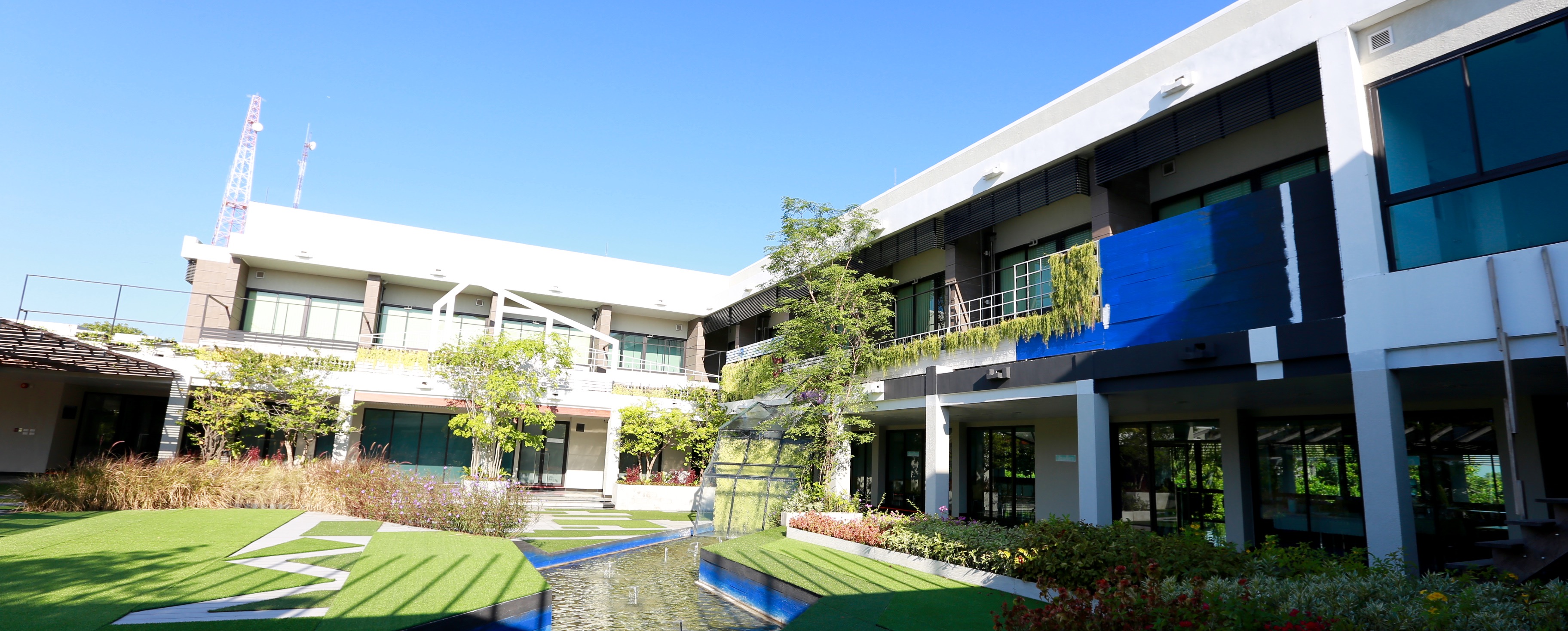
SCGI building is a two-story building, with 3,892 square meters, and comprised of
Auditorium Room (180 seats)
Laboratory Room (80 seats) or divided to 2 rooms (40 seats per each)
Conference Room (45 seats)
2 Conference Rooms (15 seats)
Research Room (35 seats)
Cafeteria
Burapha University
Burapha University originated from Bangsaen Educational College which was the first regional tertiary educational institute, established on July 8, 1955. Subsequently, it became a campus of Srinakharinwirot University and was renamed Srinakharinwirot University, Bangsaen Campus on June 29, 1974. On July 29, 1990, it was again renamed Burapha University and later became autonomous on January 9, 2008.
The First Phase: Bangsaen Educational College (1955 - 1974)
In 1949, the High-Level Teacher Training School at Soi Prasarnmit, Prakanong District, Pranakorn Province was established by The Ministry of Education. After that, in 1954, the school was upgraded to be an educational college and renamed Prasarnmit Educational College. In 1955, two campuses were established: Pratumwan Educational College in Pranakorn Province and Bangsaen Educational College in Chon Buri Province. On July 8, 1955, Mr. Mangkorn Promyotee, the Minister of Education at that time chaired the opening ceremony and placed the foundation stone of the administration building which was the first building of Bangsaen Educational College. There were 41 first generation students. In 1956 the college received Piboonbampen School from the Division of General Education to be a demonstration school of the college and renamed it “Piboonbampen” Demonstration School, Bangsaen Educational College. Later, in 1958, the first 35 students graduated from the school.
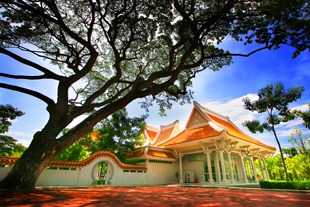 The Second Phase: Srinakharinwirot University, Bangsaen Campus (1974 – 1990)
The Second Phase: Srinakharinwirot University, Bangsaen Campus (1974 – 1990)
According to Srinakharinwirot Act, Bangsaen Educational College was transformed to become a campus of Srinakharinwirot University and the supervision, which had been of The Ministry of Education, was changed to be under The Ministry of University Affairs. In 1988, the cabinet was agreed to transform its status to become a new university and on July 29, 1990, it was renamed Burapha University according to Burapha University Act 2533 B.E. in government gazette volume 107 section 131.
The Third Step: Burapha University (1990 – the present)
Burapha University has been consistently developed in terms of physical environment, personnel, and administration. In order to do so, a number of new organizations were established and the administration was also extended, aiming for more effective pedagogical management; for instance, Chanthaburi Campus was established in 1996 and one year later Sakaeo Campus was established. Burapha University offers numerous educational levels: Bachelor’s Degree, Master Degree, and Doctoral Degree in Social Sciences, Health Science, and Science and Technology
Philosophy : To establish intellect, encourage the search for knowledge and morality and guide society.
Motto : Gaining intellectual knowledge brings happiness.
Vision : “Wisdom of the East for the Future of the Nation”
Mission :
- Generate intellectual knowledge and management practices to enhance social development.
- Provide world-class standard education in order to produce ethically minded, specialized, and potential graduates.
- Provide academic services to the society in order to establish it an intellectual richness and self-reliant society.
- Support and maintain Thai arts, culture and Thai identity.
- Enhance strengths of the University through the establishment of highly effective management system making it independent and self-sufficient.

History of establishment – Faculty of Geoinformatics
Faculty of Geoinformatics within the Burapha university, Bangsaen, Chonburi, beginning from the time that the state is under the Department of Geography, Faculty of Humanities and Social Sciences. Started teaching at the undergraduate level. In the course of Science Department of Geography And has revised the curriculum to meet modern needs. The operator continues The Council aims to achieve excellence in the field. Geo-Information Science of the East Due to the shortage in the field of geospatial field of 16 announced by the Commission on Higher Education in 2003, with a shortage in the field of science in the branch network, Remote Sensing & GIS and geospatial technologies addition, the Department of Geography. There are also fields that are essential for developing countries, such as geographic environment. Survey and Urban Planning The disciplines are integrating the various information.
VISION, PHILOSOPHY, MISSION AND PURPOSE
Philosophy: Wisdom, Knowledge, Integrity for a Better Society
Determination:
- To produce graduates who possess wisdom, knowledge and virtue
- Strive to build knowledge to excel in academic arena
- To become the center of academic and cultural inheritance in the eastern region and lead the society to the betterment
Vision: “Center of Excellence for Geo-Informatics of Eastern Region”
Identity: Geo-informatics for community
Responsibilities:
- To produce quality graduates
- To build knowledge and conduct researches in geo-informatics to serve society and community.
- To encourage and empower people and community to become self-reliant and responsive to culture and environment conservation
- To develop human resource for higher quality and efficiency
- To manage organization efficiently
Goals:
- Quality graduates
- Geo-informatics knowledge, researches and creations
- Self-sufficient people and strong community rich in culture and virtue
- High-quality and efficient staff
- Efficient and productive management system

